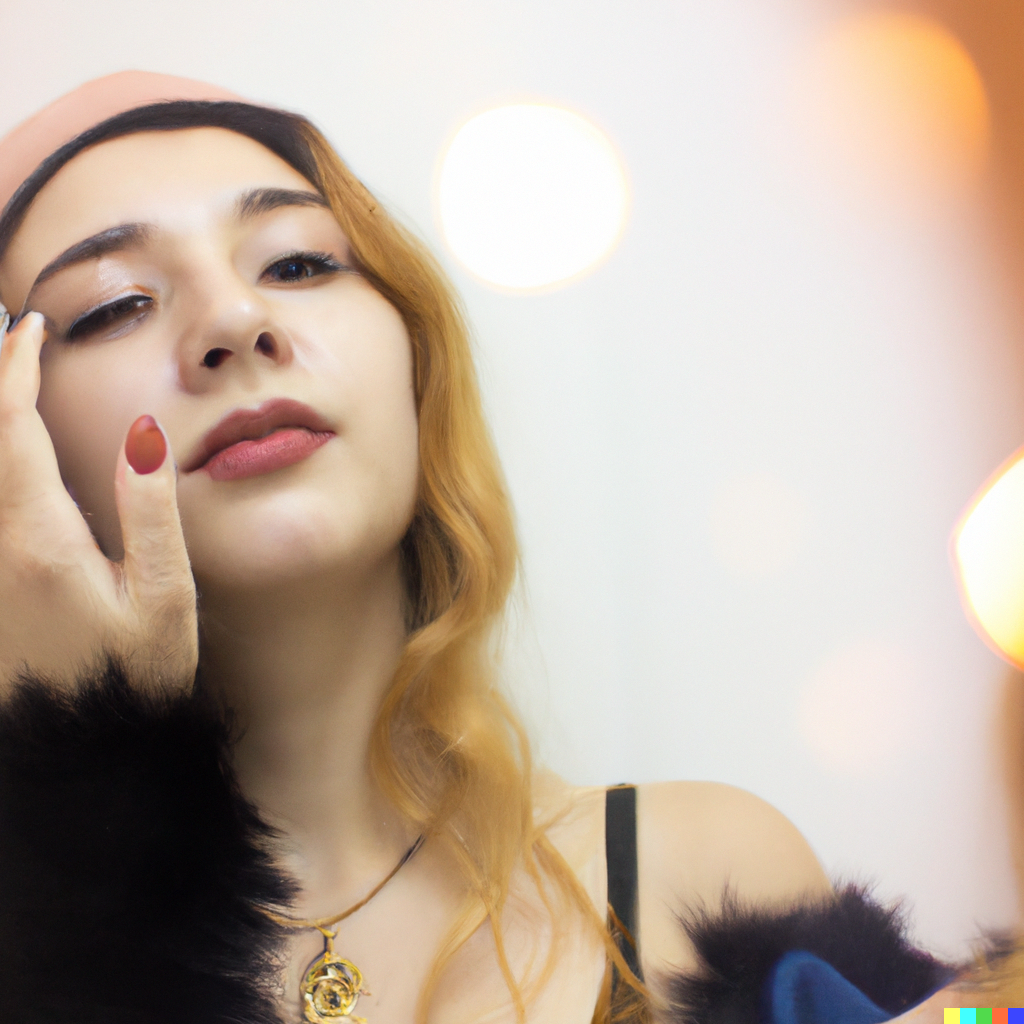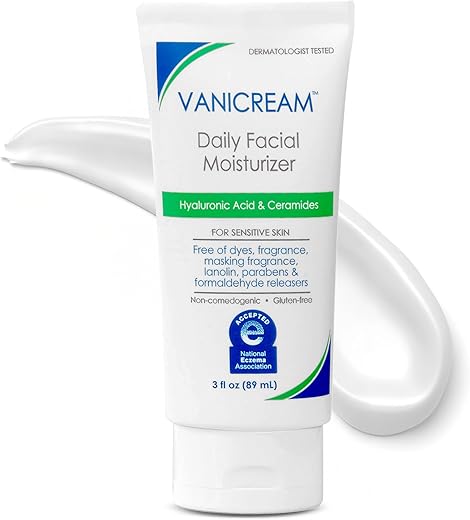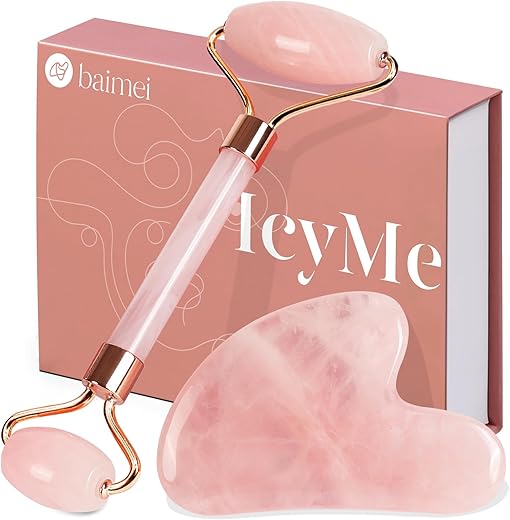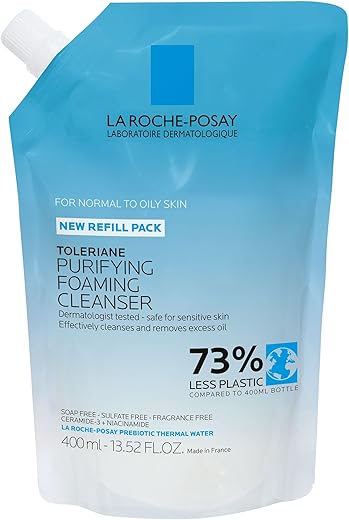
Balm-to-Oil Rescue: Zap Stubborn Makeup Fast
Quick Rescue for Stubborn Makeup: Why Balm-to-Oil Works
Ever wrestle with waterproof mascara or long-wear foundation that refuses to budge? Balm-to-oil cleansers melt down stubborn makeup fast, without tugging or stripping your skin. They start as a solid balm, transform into a silky oil on contact, and dissolve even the most resistant formulas.
This article explains how balm-to-oil products work, how to choose one for your skin, and a quick step-by-step routine to remove heavy makeup safely. You’ll also find troubleshooting tips for common problems and simple DIY blends you can make at home—plus safety notes to keep your skin happy.
Read on for quick, practical tips that save time, prevent irritation, and leave skin clean, comfortable, and ready for the next step in your routine right now.




Clinique Take The Day Off Cleansing Balm: Balm-to-Oil Magic for Nourished Skin
What Is a Balm-to-Oil Cleanser and How It Works
The format and the simple chemistry
A balm-to-oil cleanser begins as a solid or semi-solid balm (think soft waxes, butters, and esters) that melts into a lightweight oil when warmed by your fingers or skin. It follows the “oil-dissolves-oil” principle: oil-friendly makeup ingredients (waterproof mascara, silicone-heavy primers, long-wear foundations) dissolve into the balm’s oils. Emollients provide slip and solubilize makeup, while mild surfactants/emulsifiers let the oily blend rinse away when you add water—forming a milky emulsion that carries dirt down the drain without leaving a greasy film.
Quick real-world note: a few rubs with a melting balm often removes what a dozen wipes can’t, saving time and reducing eye tugging.
How it differs from other cleansers
Examples: Banila Co Clean It Zero, Clinique Take The Day Off, and Heimish All Clean Balm are popular balm-to-oil options; choose one based on scent and ingredient preferences.
Texture, scent, packaging and the user experience
Expect satin-silk slip, a mild skin-warming as it melts, and variety in scents—from fragrance-free options for sensitive skin to lightly perfumed blends. Packaging ranges from jars and tubs (easy scooping) to balm sticks and tubes (less mess). Pro tip: use dry hands, scoop a pea-sized amount, warm between palms, massage over dry skin, then emulsify with water and rinse for fast, gentle makeup rescue.
Why Balm-to-Oil Is Ideal for Heavy and Waterproof Makeup
Superior solubilization of silicone- and wax-based formulas
Long-wear primers and foundations often rely on silicones (dimethicone, cyclopentasiloxane) and waxy binders to lock pigment in place. Balm-to-oil cleansers are rich in oil-soluble emollients that literally dissolve those ingredients instead of just lifting them. The result: foundation and primer that feel like they’ve melted away rather than been smeared across the skin.
Efficient breakdown of heavy foundations, pigments and SPF
Heavy, layered makeup — especially stage or photo-ready looks — contains concentrated pigments and sometimes SPF filters (chemical and mineral) that cling stubbornly. A balm’s oily matrix penetrates pigment agglomerates and breaks apart mineral sunscreens (zinc/titanium oxides) more effectively than water-based removers. That’s why many makeup artists keep a balm handy for quick, clean changes between looks.
Gentle dissolving of waterproof mascara and eyeliner
Waterproof eye formulas use crosslinked polymers and waxes to resist water and sweat. Balm-to-oil softens and dissolves those polymers with minimal mechanical force. Instead of tugging at the lash line for minutes, a few warm, brief strokes usually release mascara and liner, reducing lash fallout and eye irritation.
Minimizes rubbing, reduces residue, improves comfort
Because balms dissolve rather than drag, they cut down on repetitive rubbing that stretches delicate eyelids and causes redness. They emulsify with water to rinse cleanly, leaving less greasy residue than plain oils or wipes — a big comfort plus for sensitive eyes.
When to add a balm-to-oil step
Next, we’ll look at how to choose the right balm-to-oil cleanser for your skin type and priorities.
How to Choose the Right Balm-to-Oil Cleanser for Your Skin
Key ingredients to prioritize
Look for ingredient labels that promise effectiveness and skin-friendly performance. Beneficial ingredients include:
These ingredients dissolve heavy pigments without stripping — a real win when you need speed and comfort.
Ingredients and additives to avoid
Watch out for components that can irritate or clog pores:
Match the formula to your skin type
Eye-safety, packaging and hygiene
Prefer ophthalmologist-tested labels if you remove waterproof eye makeup regularly. For hygiene, choose jars that include a spatula or, better, a pump/dispenser to avoid double-dipping and contamination.
Eco and ethical checklist
Look for biodegradable surfactants, recyclable or refillable packaging, and cruelty-free or vegan certifications if those values matter. These features are increasingly common—and easy to filter for while shopping.
With the right ingredients and packaging picked, you’ll be ready to move into a fast, step-by-step routine that zaps stubborn makeup without drama.
Step-by-Step Routine: Zap Stubborn Makeup Fast
Prep: clean hands, hair back (30–60s)
Wash hands or use a pump-dispenser balm so you don’t double-dip. Tie hair back and have a clean towel ready. This small prep saves time and reduces contamination.
Warm the balm (5–10s) + hygiene tips
Scoop pea-size amount with a spatula or pump onto dry palms. Rub between fingers 5–10 seconds until it turns glossy—warmth melts pigments and waterproof formulas faster. Always use a spatula or pump to keep jars sanitary.
Application: full face (30–60s)
Eye area & waterproof mascara shortcuts
Emulsify and rinse (30–60s)
Wet hands slightly, emulsify balm into a milky lotion (30–45s)—this transforms oil into rinseable particles. Rinse with lukewarm water using gentle splashes. A muslin cloth or warm washcloth can help remove residue without harsh friction.
Double-cleanse options (60–90s)
Travel / late-night variations
Product layering: cotton pad vs. washcloth
These timed steps speed removal while protecting skin; if something sticks, the next Troubleshooting section gives targeted fixes.
Troubleshooting: Common Problems and Smart Fixes
Film or greasy residue after rinsing
If your skin feels slick, you probably under-emulsified. Warm wet hands and work the balm for 30–45 seconds until it turns milky; that converts oils into rinseable particles. Use a warm muslin cloth or a silicone cleansing mitt to lift the last traces—no harsh scrubbing. If residue persists, follow with a gentle water-based cleanser.
Stinging, irritated eyes
For sensitive eyes, never rub. Soak a cotton pad with balm or micellar water, hold it on closed lashes for 10–15 seconds to loosen waterproof mascara, then sweep down once. If you get stinging, flush with cool water and try a hypoallergenic eye formula next time. For targeted cleanup, reach for the Garnier Micellar Water Hydrating Facial Cleanser which works well for final lashline detail without rubbing.
Breakouts after use
Patch-test any new balm on the inner forearm for 24–48 hours before face use. If breakouts appear, switch to a non-comedogenic balm (look for “non-comedogenic” or lightweight oils like squalane or caprylic/capric triglyceride). Reduce frequency, double-cleanse with a gentle foaming cleanser, and avoid heavy occlusives until skin calms. If acne worsens, stop and consult a dermatologist.
Stubborn eyeliner or waterproof mascara
Use the hold-and-glide method: saturate a cotton swab or pad with balm, press to the lashline for 10–20 seconds, then sweep downward in one motion. For precision, use cotton-swab tips or a silicone precision brush rather than rubbing.
Fragrance reactions
If scented balms sting or cause redness, opt for fragrance-free formulas. Perform a two-day patch test and choose products labeled for sensitive skin.
Quick, on-the-go fixes
Makeup wipes are okay for emergencies but can leave residue; oil-based single-use wipes or a small travel-size pump balm are better. Carry mini micellar water and a few cotton pads for precise removal.
Rescue for flaky or pilling skin after removal
Rinse thoroughly, pat dry, then apply a hydrating serum (hyaluronic acid) and a lightweight cream or ceramide balm. If products pill, let skin fully dry between layers.
Next up: DIY balm-to-oil blends and the safety checklist to craft safe, effective mixtures at home.
DIY Balm-to-Oil Blends and Safety Considerations
Simple Beeswax Balm (Basic Rescue)
Ingredients:
Method:
Texture expectations:
Storage tips:
Lightweight Non‑Comedogenic Variant (Oily / Acne‑Prone)
Ingredients:
Method:
Texture expectations:
Storage tips:
Safety Checklist — don’t skip this
If any irritation, persistent redness, or unexpected breakouts occur, stop use and consult a dermatologist before trying another homemade blend. Next up: the article conclusion.
Fast, Gentle Makeup Rescue with Balm-to-Oil
Balm-to-oil cleansers are a fast, skin-friendly way to dissolve heavy, waterproof makeup by binding oils, makeup pigments, and sunscreen so they rinse away with minimal rubbing. Pick a product matched to your skin (non-comedogenic for oily, fragrance-free for sensitive), patch-test it, and use the massage–emulsify–rinse routine; follow with a gentle cleanser if you prefer double cleansing.
Troubleshoot common issues by rinsing thoroughly, using a soft cloth to remove residue, or switching formulas for irritation or clogging. For DIY backups, blend stable, non-comedogenic carrier oils with a touch of emulsifier, keep containers clean, and stop if irritation appears. Try a chosen balm-to-oil consistently for a week to judge effectiveness and adjust as needed — confidently today.

Hey, I’m Ava Wilson—a skincare enthusiast and a certified esthetician. I’m dedicated to sharing my knowledge and empowering others to achieve healthy, glowing skin through simple, effective routines and natural remedies. Join me on this exciting skincare journey, and let’s unlock your skin’s potential for a confident, beautiful you.







Short and funny: My cat tried to eat the balm once while I was cleaning my face. 10/10 would recommend keeping skincare away from pets 😂 Also, Beauty of Joseon smelled lovely and removed my eyeliner well.
Cats will try anything. My dog licks the cotton pads. Keep them out of reach!
Pet chaos aside, smells can be a deciding factor. Joseon’s scent is so calming.
Oh no, cat mishaps! Keep products sealed — and glad the Joseon balm worked for you (and survived the pet test 😅).
Neutral/funny: I thought ‘zap stubborn makeup fast’ meant some high-tech gadget. Turns out it’s just good old balm-to-oil technique. Still impressive tho. 😄 The step-by-step helped me speed up my nighttime routine without sacrificing thoroughness.
If anyone invents a literal zapper that’s safe for faces, I’ll preorder.
Haha, same — no zap gun included. Glad the routine saved you time!
Love the step-by-step routine breakdown — short, practical. Tried JUNO & Co. Clean Ten Ingredient Cleansing Balm after reading this and it zapped my stubborn eyeliner in like 30 sec. Also lol, the tip about using a cotton pad soaked in Garnier Micellar Water for stubborn spots actually worked for me. 🙂
I appreciate that the article suggested rinsing well. My eyelids used to feel heavy if I skipped the follow-up cleanser.
Same with JUNO! Melt + massage + wipe = magic. I was skeptical but now I’m a convert.
Glad it helped, Maya. JUNO’s simpler formulas often perform well for sensitive eyes — nice pick!
Tiny rant: why does ‘melting’ makeup sound so aggressive? lol jk. But serious — the step about warming the balm between fingers before massaging is KEY. Made removal way faster for me, especially with waterproof bronzer. Also, follow-up micellar water (Garnier Waterproof) worked great for final cleanup.
Not aggressive — just efficient! Warming the balm activates it. Glad the Garnier Waterproof helped with your bronzer.
Same, warming + short massage = less tugging on the skin. Important for mature skin too.
Quick question — the article mentions DIY blends. Is it safe to mix oils like sweet almond with a balm base? I’m acne-prone and scared of breakouts. 😬
I swapped sweet almond for squalane and it’s been a game changer. No breakouts and still melts my eye makeup.
Good question. The troubleshooting and safety section warns that comedogenic oils (like some nut oils) can aggravate acne. For acne-prone skin, try non-comedogenic oils like squalane or fractionated coconut oil in small patch-tested amounts.
I had a minor freakout trying to remove glitter eyeshadow once. The Beauty of Joseon Radiance Cleansing Balm took off most of it, but I still had flakes. The article’s troubleshooting tip about using a cotton sliver soaked in cleansing oil and pressing gently saved me. Pro tip: don’t rub glitter into your face 😂
Haha noted — pressing and lifting is the trick for glitter! Glad the Joseon balm helped.
Tape trick love. And then balm-to-oil for the rest.
Also try a tape trick before cleansing if it’s chunky glitter — gently press tape to lift big pieces first (careful with skin sensitivity).
Longer note — the safety considerations section was helpful. It covered patch testing but I wish it emphasized allergy testing more. I once had a reaction to a fragrance in a balm and it looked like contact dermatitis for a week. If you have sensitive skin, always patch test on your inner arm for 48 hours.
Also, the article’s DIY blends warning about preservatives was important — homemade mixes can go rancid.
Yikes that sounds rough. I now label my DIY jars with the date so I don’t accidentally use old oil blends.
Great point, Hannah. We’ll expand the allergy-testing recommendation and the shelf-life guidance for DIY blends. Thanks for the personal insight.
Agree on the label idea — helped me avoid rancid oil issues too.
Constructive: the article could’ve included a quick comparison chart of the listed Amazon products (like texture, best for sensitive skin, price point). I ended up googling reviews separately. Still helpful content though.
Thanks for the suggestion — great idea. We’ll consider adding a concise comparison table to make product choices easier in a future edit.
Agree. Even a one-paragraph pros/cons for each would cut the research time in half.
Positive review: CeraVe Cleansing Balm Removes Waterproof Makeup did remove my stubborn mascara, but my eyes watered a bit during massage. Might be user technique? The article’s tip to keep product away from lashline initially helped. Would recommend to those with non-super-sensitive eyes.
I had watery eyes too until I realized I was using too much product. Dialing it back fixed it.
Try the JUNO one if your eyes are super sensitive — it was gentler for me.
If eyes water, try closing your eyes fully and use gentle circular motions on the lids without getting product in the lashes right at the root. Also rinse thoroughly and use a soothing eye ingredient after if needed.
Tried Anua Heartleaf Pore Control Cleansing Oil as recommended for stubborn waterproof foundation. It removed everything but my tinted sunscreen — which was stubborn. Followed the step-by-step and a second gentle cleanse did it. Little tip: if you wear sunscreen, be patient and double cleanse.
Exactly — sunscreen and long-wear tints often need that second cleanse. Thanks for sharing your results!
I find using warm water increases efficacy without irritation. Helps dissolve the SPF layers.
Constructive critique: the article could include a tiny note on environmental impact — like reusable balm tins vs single-use micellar pads. I’m trying to reduce waste but still need heavy-duty removal on occasion.
I switched to a reusable bamboo cleansing pad for the wipe-down stage and it cut my cotton use by a lot.
Refills are the future. Some brands offer larger tubs which reduce packaging per use.
Excellent suggestion. We can add a sustainability note about refillable balms and washable muslin pads vs disposable cotton pads/micellar wipes.
Wow this article came at the right time — tried a balm-to-oil yesterday to remove my waterproof mascara and it actually worked way faster than my usual micellar routine. I used CeraVe Cleansing Balm and then followed up with Garnier Micellar Water for Waterproof Makeup like the piece suggested. My only gripe: I felt a tiny bit greasy afterward. Anyone else get that?
I use Beauty of Joseon Radiance Cleansing Balm and get minimal greasiness. Maybe formula differences? CeraVe might be richer.
Yep same here. I pat with a warm damp cloth after the balm stage and then use the Garnier Hydrating — no greasy feeling. Also, less is more with balm amount imo.
Thanks for sharing, Olivia! A light double cleanse (balm-to-oil then a gentle foaming or micellar follow-up) usually sorts the residue. Try a second short rinse or a hydrating micellar like the Garnier Hydrating one to balance it.
Neutral take: balm-to-oil is great for heavy makeup but a bit extra for light days. For everyday wear I still reach for Garnier Micellar Water Hydrating Facial Cleanser. Fast and no drama. Not trying to be fancy on a Monday morning lol.
Same. Micellar for quick cleans, but when I have a smoky eye or waterproof liner, balm-to-oil is my weekend go-to.
Totally fair — the article’s aim was to present options. Micellar for quick/light days, balm-to-oil for heavy/waterproof looks.